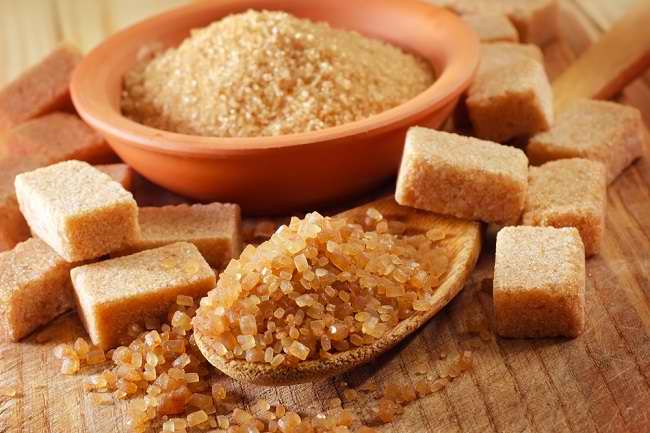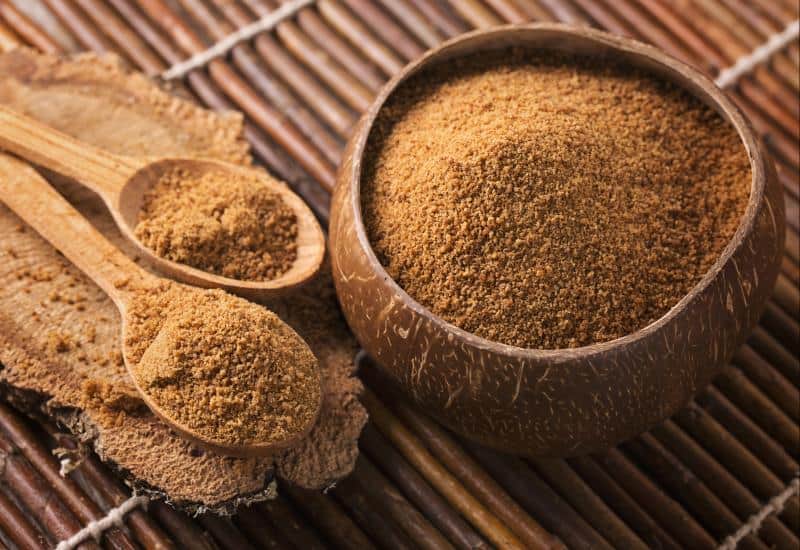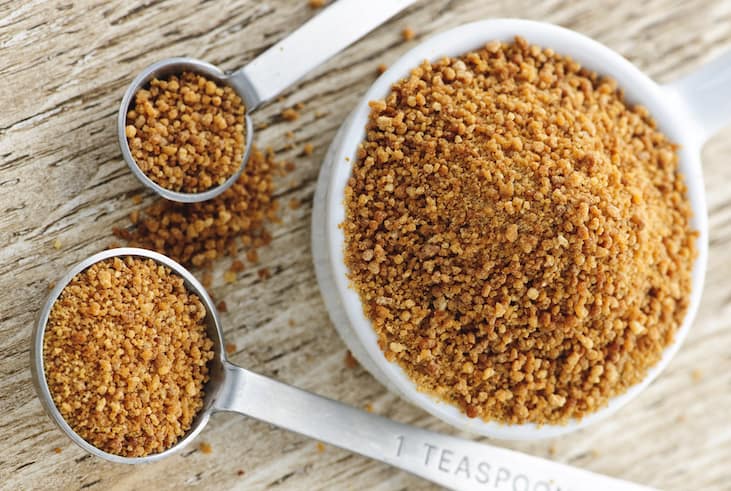The global industrial sugar market is projected to grow from USD 40.63 billion in 2024 to USD 50.76 billion by 2032, exhibiting a CAGR of 3.23%. You need a clear sensory and functional map to choose the right brown sweetener for product development; this post gives you a focused flavor wheel and use-case matrix comparing coconut sugar vs brown sugar vs muscovado, highlighting taste notes, moisture, texture, browning behavior, and ideal applications so you can match sweetener to formulation goals and processing constraints.
Table of Contents
The Anatomy of Sweetness: Defining Coconut Sugar vs Brown Sugar vs Muscovado

You’ll distinguish these sugars by source and refinement: coconut sugar is dehydrated coconut palm sap (roughly 70–80% sucrose) with toffee notes; brown sugar is refined cane sucrose with molasses reintroduced (light ≈3–4% molasses, dark ≈6–7%), offering mild caramel; muscovado is minimally refined cane sugar retaining high molasses (often 10–15%), yielding deep molasses intensity and sticky crystals that change texture and Maillard behavior in formulations.
- Unique Profiles and Processes
You’ll note process-driven traits: coconut sugar’s sap is boiled and granulated, producing dry, granular crystals and subtle caramel that browns predictably; brown sugar is centrifuged white sugar with calibrated molasses levels—ideal for consistent caramelization; muscovado forms from evaporated cane juice with little centrifuge, creating wet, clumped crystals and robust bitter-sweet molasses ideal for dense cakes, sauces, and rubs.
- Unveiling Molasses Content and Processing Differences
Your functional choices hinge on molasses percentage and refinement. Light brown (≈3–4% molasses) gives mild color and moisture, dark brown (≈6–7%) increases chew and flavor, while muscovado (≈10–15%) raises hygroscopicity, acidity, and mineral notes; coconut sugar lacks cane molasses but contributes minor minerals and different reducing-sugar profiles that affect browning and shelf stability.
Molasses elevates soluble solids and ash: muscovado’s higher molasses boosts water-binding and Maillard precursors, deepening color and adding bitter-molasses notes. In bakery pilot runs you may reduce added water by about 2–5% to retain dough consistency; yeast can benefit from molasses nutrients yet face greater osmotic load, sometimes lengthening proof times—use small-scale trials to dial flavor, hydration, and proofing for target texture.
Savoring the Spectrum: Crafting a Flavor Wheel

A wheel—kinda like a pie chart but way cooler—split into 12 to 16 spokes. Each spoke stands for a flavor or trait you’d actually care about, stuff like sweetness, caramel vibes, molasses punch, nuttiness, floral hints, fruity tones, a bit of smokiness, roasted notes, bitterness, acidity, even a hint of salt, and that whole mouthfeel thing. Keep it simple with a 0–5 scale for each. Now, give people actual reference points—like, 0 for plain old sucrose, 3 for pan-caramelized sugar, and 5 for blackstrap molasses. Makes it way less subjective, you know?
Use color gradients so the intensity pops visually—maybe blue for low, deep red for high, anything works. Toss in little icons for textures and mouthfeel, too. That way, product people aren’t squinting at spreadsheets; they can just glance at the wheel and instantly see how coconut sugar, brown sugar, or muscovado lines up with flavor that yo wanted.
- Exploring Diverse Flavor Notes: Caramel to Smoky
You’ll map coconut sugar toward light caramel/woody notes (caramel 2–3, molasses 0–1), standard brown sugar around caramel-plus-molasses (caramel 3–4, molasses 1–2), and muscovado at the deep-molasses end (molasses 4–5, bitter 1–2, smoky 1–2). Include concrete anchors: butterscotch for caramel, burnt brown sugar for deep caramel, and cane-field smoke for smoky. Quantifying these as numeric intensities lets you predict flavor impact in systems like cookie dough (low moisture) versus rum cake (high moisture).
- Building an Accessible Flavor Lexicon
You’ll create a three-tier lexicon: primary anchors (sweetness, caramel, molasses), secondary descriptors (nutty, roasted, smoky, fruity), and tertiary qualifiers (astringent, saline, lingering bitter). Pair each term with a simple food analogy and a 0–5 intensity example—e.g., “molasses: blackstrap =5; brown sugar =2; coconut sugar =1”—so cross-functional teams can speak the same sensory language across R&D, QA, and marketing.
Alright, here’s what you do: Get a squad of ten tasters together and run each sample past them three times. Use that 9-point scale (you know, the one where 1 is basically “meh” and 9 is “whoa, intense!”), but don’t just leave ’em hanging—give them real stuff to compare, like plain ol’ sucrose for a neutral sweet, 10% caramel syrup to nail the caramel flavor, and commercial blackstrap for that molasses kick.
Don’t just sniff and call it a day—catch both what you smell up front (orthonasal) and what hits you when you taste (retronasal). Oh, and time it! Jot down how long it takes for the flavor to show up and how long it hangs around. Seconds count, literally.
But wait, there’s more—don’t ignore the nerdy stuff. Log how sticky (hygroscopic), how easily it dissolves (solubility), and how much it browns when you cook it up (browning potential). Track all that with your sensory scores. This yields a searchable matrix you can use to predict formula adjustments: for instance, add 0.5% molasses to replace muscovado’s depth or increase fat by 1–2% to soften perceived bitterness in high-muscovado formulations.
Chromatic Chemistry: Color Ranges and Their Impact

Dark muscovado (deep mahogany) imparts both color and flavor intensity, while coconut sugar’s amber hues keep your product visually lighter with toffee notes; light and dark brown sugar occupy mid-range tones. If you’re developing products, matching L*a*b targets or molasses percentages helps predict final crust color, glaze shade, and perceived sweetness. Use color strategically to signal richness—bakery crusts, sauces, and confection glazes respond differently to each sugar’s pigment and water content, altering bake-time endpoints and consumer perception.
- Typical Color and Moisture Levels Defined
You can expect light brown sugar to contain about 3.5% molasses with roughly 3–4% moisture and a warm tan color, while dark brown is near 6.5% molasses and 5–6% moisture. Muscovado often retains 10–15% molasses and feels sticky at ~6–8% moisture. Coconut sugar tends to be drier (about 1–3% moisture) with amber-to-deep-amber crystals, which reduces hygroscopic pull and lessens batter thinning compared with molasses-rich alternatives.
- The Science of Browning in Baking and Sauces
Maillard reactions activate around 140–165°C and peak at intermediate water activity (aw ≈0.6–0.8), while sucrose caramelization accelerates above ~160°C and dominates near 180–200°C. Sugars with higher reducing-sugar fractions and free amino acids—muscovado, for example—drive faster Maillard browning and deeper color at lower oven temps, whereas coconut sugar’s higher sucrose/inulin profile favors cleaner caramel notes and less protein-driven browning in your baked goods and sauces.
In practical trials you’ll see clear differences: substituting 20–30% muscovado for white sugar in cookie dough often deepens crust color within standard bake times, increases moisture retention and yields pronounced molasses aroma; replacing with equal-weight coconut sugar produces subtler crust browning, reduced spread, and a finer crumb. Adjust formulation by reducing added water 2–4% with muscovado or adding 1–2% liquid for drier coconut sugar to keep color and texture predictable.
Sweet Science: Functionality Beyond Flavor
Water activity, particle size and hygroscopic pull shape functional choices as much as taste; sucrose solubility (~2.1 kg/L at 20°C) sets a baseline that coconut sugar (≈70–80% sucrose) matches closely, while muscovado’s elevated molasses and invert sugars lower deliquescence and raise water uptake. You’ll weigh how each sweetener alters texture, shelf life and processing — from syrup viscosity in barbecue glaze to moisture retention in soft cookies.
- Understanding Solubility and Hygroscopicity
Sucrose solubility (~2.1 kg/L at 20°C) means coconut sugar behaves predictably in syrups and clear beverages, dissolving at similar rates to white sugar; muscovado’s higher invert-sugar fraction and minerals reduce its deliquescence point, so it absorbs moisture at lower relative humidity and increases water-binding in doughs. When formulating powders, keep hygroscopic inclusions to roughly 2–5% of the dry mix to limit early clumping and shelf-life drift.
- Evaluating Flow Properties and Caking Risks
Particle size, bulk density and cohesion govern flow: assess Hausner ratio (>1.25 signals poor flow) and Carr index (>25% indicates caking tendency). Muscovado often shows higher cohesion and lower tapped density than granulated brown or coconut sugar, so you’ll see hopper bridging and ratholing without intervention. Typical fixes include fumed silica or precipitated silicon dioxide (0.2–1.0%), tricalcium phosphate (0.2–0.5%), or milling to narrow particle distributions.
Run bench tests (angle of repose, shear cell, tapped density) before scaling; if Hausner exceeds 1.25, trial 0.3–0.8% anti-caking agent and retest flow function. Store muscovado blends below ~50–55% RH and consider vibratory feeders or increased hopper outlet diameters for cohesive batches. In pilot runs, adding 0.5% fumed silica typically restored free flow in soft-brown formulations without sensory impact.
Tailored Applications: The Use-Case Matrix
Your use-case matrix should map sweetness intensity, moisture contribution, and flavor depth so you can pick by function: coconut sugar (≈70–80% sucrose) brings caramel/almond notes with moderate sweetness; light/dark brown sugar (molasses ~3.5%/6.5%) gives balanced toasty sweetness; muscovado, with the highest molasses concentration, supplies deep molasses, higher moisture and pronounced toffee. Match these axes to product goals—crisp texture, chewiness, or pronounced molasses tone—then test 1:1 substitutions and tweak hydration or acidity accordingly.
- Ideal Pairings: Cookies, Cakes, and Sauces
You should choose by texture target: for chewy cookies and sticky bars use muscovado (increases moisture and chew), for classic chocolate-chip cookies use dark brown for caramel depth without overwhelming, and for crisp biscuits try coconut sugar—its coarser crystals encourage snap. Cakes with open crumb handle light brown sugar; dense spice cakes or gingerbreads gain character from muscovado. For sauces and glazes, muscovado yields savory BBQ and mole notes while coconut sugar gives clean caramel for caramelized fruit sauces.
- Flavor Compatibility: Chocolate vs. Fruit
You’ll favor muscovado with dark chocolate (70%+) to amplify roasted, bitter-sweet notes and add smoky molasses complexity; milk chocolate pairs well with light brown for a rounded sweetness. For fruit-focused formulations, coconut sugar preserves brightness on citrus and stone fruit without masking acidity, while brown sugars complement berries and apples by adding rounded caramel tones that enhance perceived sweetness.
In formulation terms, try 10–20% sugar by fruit weight for compotes—use coconut sugar at the lower end (10–12%) to maintain vibrancy, and use brown sugar or muscovado at 15–20% when you want jammy depth. For chocolate ganaches, substituting 10–25% of the sugar with muscovado increases roasted notes and can reduce perceived acidity; counterbalance with 0.2–0.5% added citric acid or 0.5–1% lemon juice in berry applications to lift brightness when using heavier molasses-rich sugars.
Navigating Costs and Sourcing Challenges
As you map costs, expect coconut sugar to run roughly 2–3× the price of bulk light brown sugar, with organic or Fair Trade options adding another 30–50% premium. Muscovado often sells in smaller, artisanal batches with higher per-kilo prices and minimum orders that can push lead times to 6–12 weeks. You should build margin buffers for certification fees, freight spikes, and sample testing to avoid reformulation surprises during scale-up.
- Availability and Spec Stability
Availability varies: cane-derived brown sugar is widely available in 25–50 kg bags from commodity suppliers, while coconut sugar typically ships from Indonesia, Thailand, or the Philippines in 20–25 kg retail or 750–1,000 kg bulk lots. Muscovado’s higher moisture and variable molasses content cause spec drift; lot-to-lot color and Brix differences of several degrees are common. You should require Certificates of Analysis and run sensory/functional checks on each new lot to maintain consistency.
- The Implications of Labeling
Label terms directly affect formulations and retail positioning: “coconut palm sugar,” “gula aren,” and “palm sugar” are often used interchangeably, while “evaporated cane juice” has been challenged by the FDA as misleading so manufacturers now use “cane sugar” or “sugar” on labels. Organic and Fair Trade claims can justify higher shelf prices but demand traceable chain-of-custody documentation that you must collect from suppliers.
Consumers equate “muscovado” with strong molasses and sticky texture, so labeling that simply states “unrefined brown sugar” can underdeliver on expectation and trigger returns or negative reviews; in one retail test, products labeled “muscovado” scored 15–25% higher on perceived richness than identically formulated “brown sugar” SKUs.
Decision-Making Made Simple: The Product Picker
Zero fluff: pick by flavor intensity, moisture, and functional need. You prioritize shelf-stable caramel notes? Choose coconut sugar (1:1 swap in most recipes). Need chew and shine in cookies or quick breads? Light or dark brown (light ≈3.5% molasses, dark ≈6.5%) fits. Want bold, molasses-forward depth for gingerbread, barbecue glazes, or rum cake? Muscovado delivers that richness and more moisture.
- Quick Selection Guides Based on Sugar Characteristics
Match by dominant trait: coconut sugar for clean caramel and lower hygroscopicity—use 1:1 to replace white sugar in syrups and granolas; light brown (≈3.5% molasses) for balanced sweetness and soft crumb in cookies and muffins; dark brown (≈6.5% molasses) when you need color and stronger molasses notes; muscovado for sauces, marinades, and dense cakes where pronounced toffee and moisture improve mouthfeel.
- Light vs. Dark: Choosing the Right Profile
Choose light brown (≈3.5% molasses) when you want subtle caramel and a tender crumb—ideal for snickerdoodles and yellow cakes. Opt for dark brown (≈6.5% molasses) to boost color, acidity, and molasses aroma in gingerbread, baked beans, or BBQ rubs. You can swap 1:1, but expect darker color and slightly chewier texture with dark brown.
Based on research, molasses concentration affects chemistry: higher molasses increases acidity, soluble minerals, and hygroscopic sugars, altering dough hydration and browning. In practice, switching from light to dark often yields a 5–10% increase in batter moisture and faster surface browning, so you may shorten bake time by 1–3 minutes or cut liquid slightly. Product tests show dark brown enhances perceived caramel and roasted notes, improving depth in spice cakes and savory glazes.
Conclusion
Now you can use the flavor wheel and use-case matrix to select coconut sugar for subtle caramel and lower glycemic profiles, brown sugar for balanced sweetness and reliable baking performance, or muscovado for intense molasses notes and richer mouthfeel; apply the sensory and functional map to optimize formulation, shelf life, and consumer positioning across your product range.
